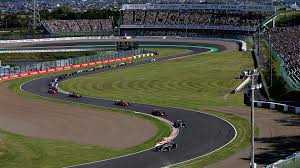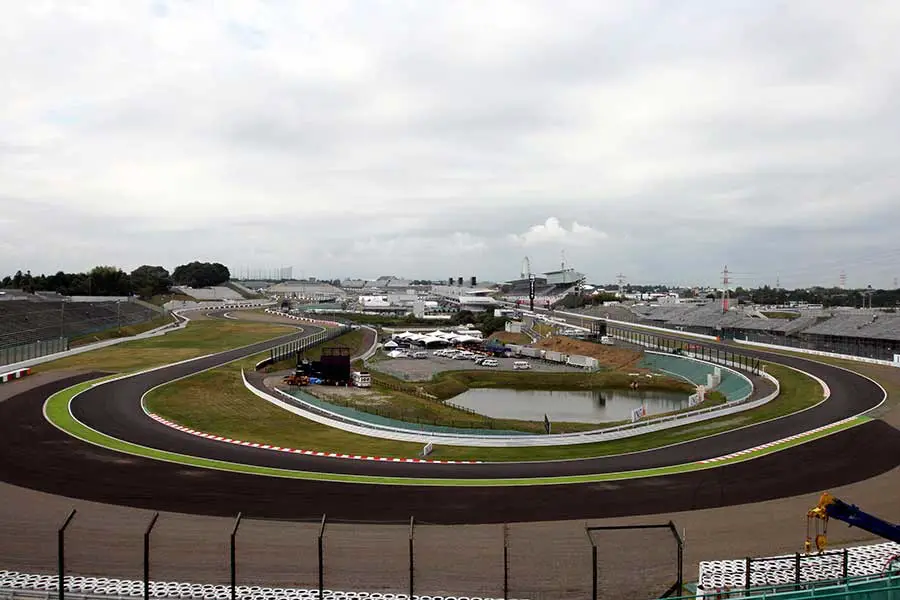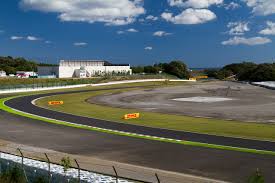Few circuits on the F1 calendar can match the passion, history, and technical challenge presented by the Honda-owned racecourse at the Suzuka Circuit, home to the Japanese GP.
Known for its figure-eight layout, this iconic track is a favorite among drivers and fans alike. It’s a track that demands respect, precision, and bravery. The changing gears, variable speeds, and intense g-forces truly test the skill and resilience of F1’s elite drivers.
Let’s delve into a lap around the Suzuka Circuit, detailing each corner, the optimal driving lines, speeds, gears, and the g-forces drivers confront.
F1worldwide.com Recommends
- The Japanese GP -The Best F1 Race
- Yuki Tsunoda: The Japanese F1 Driver Making Waves
- Yuki Tsunoda as a Child
- Yuki Tsunoda Drives His Dream Cars: A Honda NSX and a Civic Type R
Suzuka Circuit – Main Straight

As drivers blast down the start-finish straight, they reach speeds of 320 km/h (198 mph) in 8th gear.
Suzuka Circuit – Turn 1 and 2 (First Curve)
Braking hard for the first right-hander, drivers decrease their speed to around 130 km/h in 3rd gear. Transitioning into Turn 2, the lateral g-force hits around 3g.
Suzuka Circuit – Turns 3 to 7 (Esses)

The “Esses” are a series of fast, flowing left-right combinations. Starting from Turn 3 at 190 km/h in 5th gear, drivers delicately balance their cars through these rapid changes, experiencing g-forces of 3-4g. By Turn 7, they’re still in 5th gear, touching 205 km/h.
Suzuka Circuit – Turn 8 (Dunlop Curve)
A long, left-handed curve taken flat out at 260 km/h in 7th gear. Drivers feel a lateral g-force of around 3.5g.
Suzuka Circuit – Turns 9 and 10 (Degner Curve)

The first part of Degner is taken at 185 km/h in 5th gear, with a quick downshift for the tighter second part at 95 km/h in 3rd gear. G-forces here can peak at 3g.
Suzuka Circuit – Turn 11 (Hairpin)
A tight hairpin where drivers brake hard to 70 km/h, using 1st or 2nd gear. G-forces due to braking can touch -4g.
Japanese Grand Prix – Turns 12 and 13 (Spoon Curve)

A challenging double-apex left-hander, the first part is taken at 130 km/h in 3rd gear, accelerating through the second part at 150 km/h in 4th gear. Lateral g-forces hover around 2.5-3g.
Suzuka Circuit – Back Straight
One of the fastest sections, drivers achieve 330 km/h (205 mph) in 8th gear before approaching the famed 130R.
Japanese Grand Prix – Turn 15 (130R)
One of the most iconic corners in F1, 130R is a left-hand curve taken almost flat out at around 310 km/h in 8th gear. The sheer speed and direction change subjects the drivers to g-forces of up to 4g.
Suzuka Circuit – Turns 16 to 18 (Casio Triangle Chicane)
A tight chicane where drivers decelerate to 90 km/h in 2nd gear. Braking g-forces can reach -4g, while lateral g-forces in the chicane are around 2.5g.
Japanese Grand Prix – Back to the Main Straight
Exiting the chicane, drivers’ power onto the main straight, setting up for another lap or sprinting to the checkered flag.
Conclusion
In summary, the Japanese Grand Prix at Suzuka offers a breathtaking mix of high-speed stretches and intricate technical sections. With its rich history and beloved status, Suzuka remains a crown jewel in the world of motorsport.

